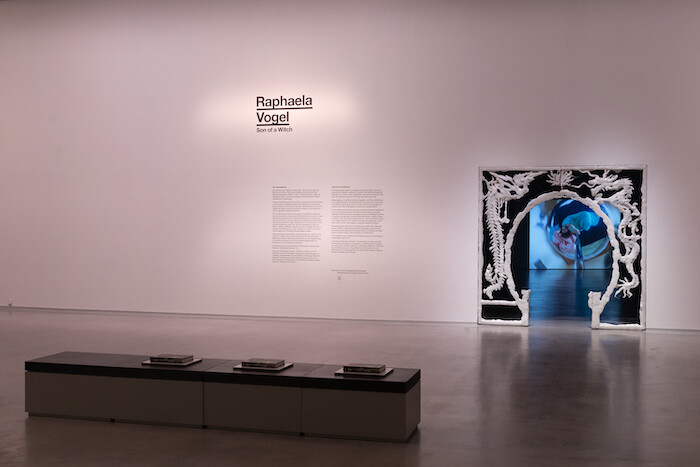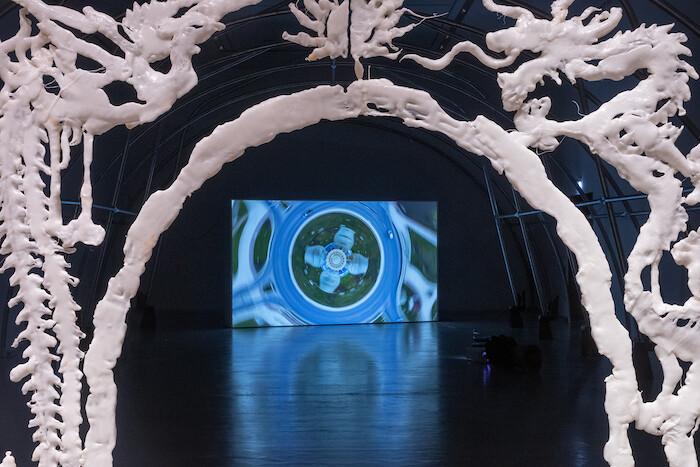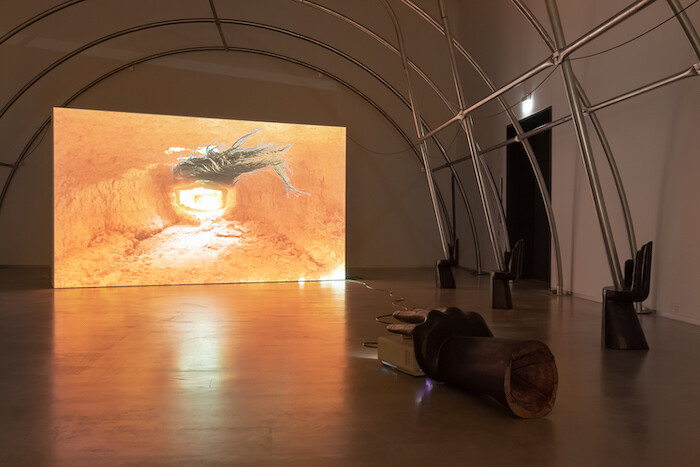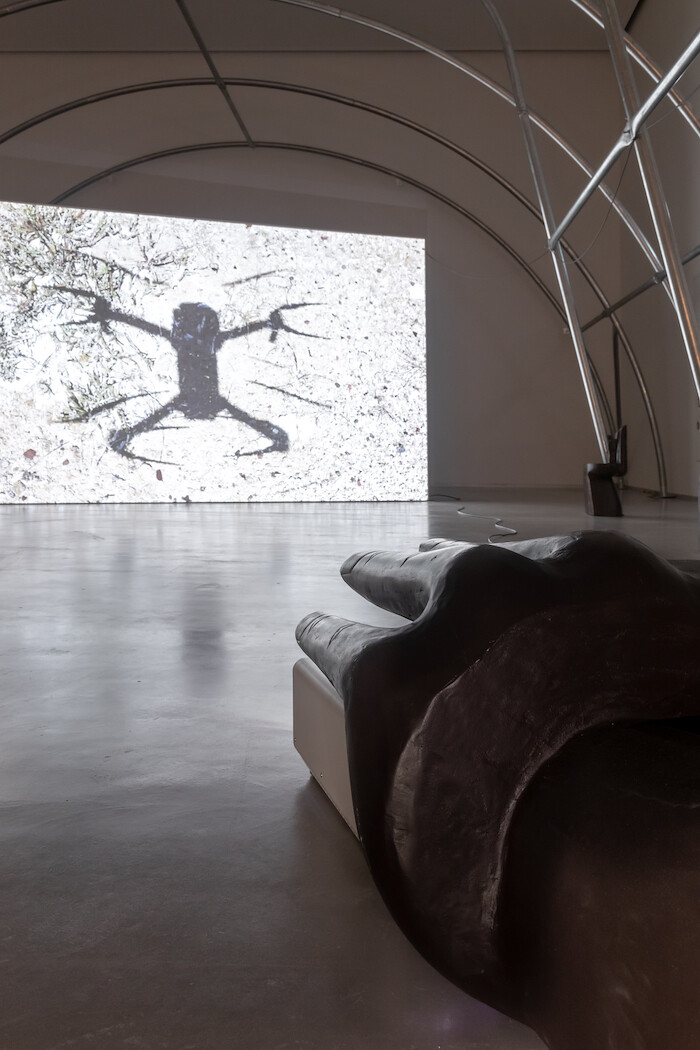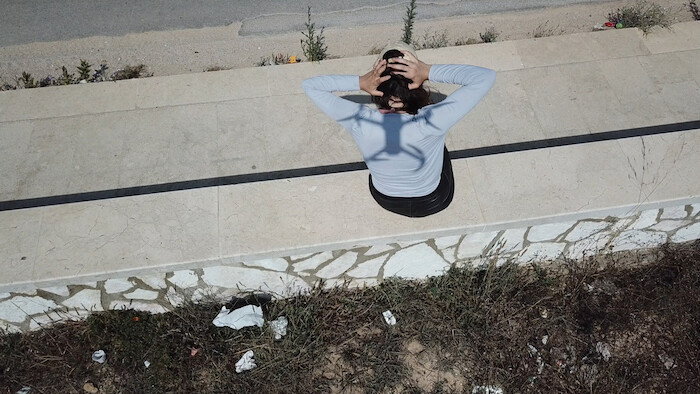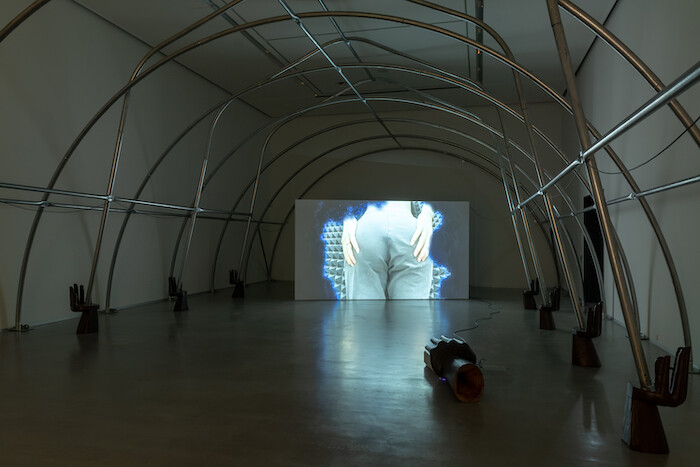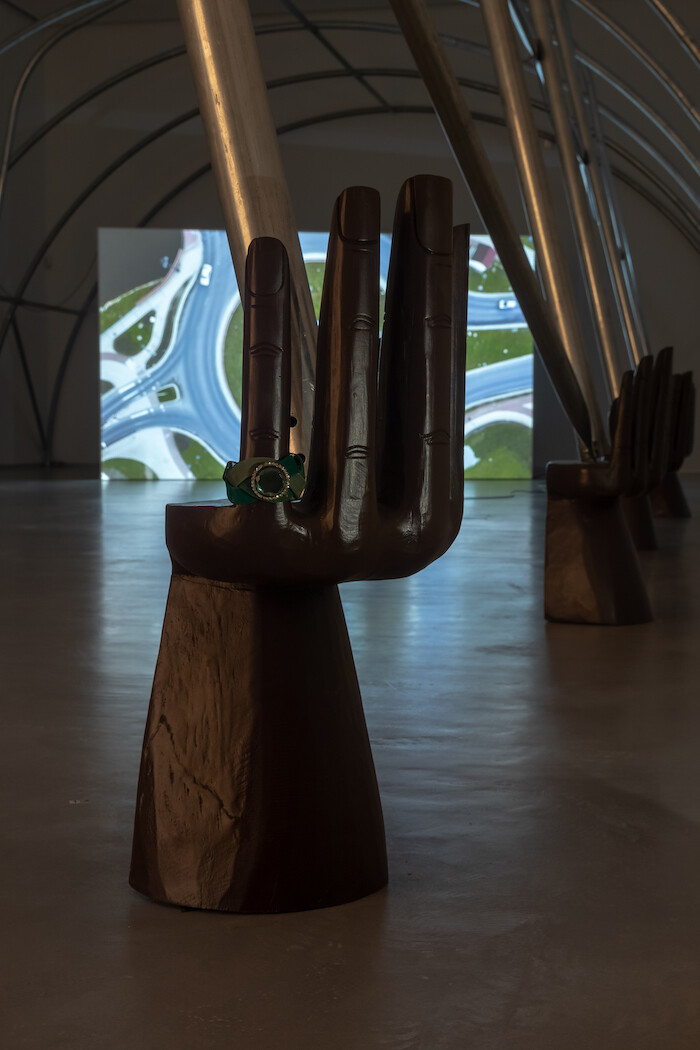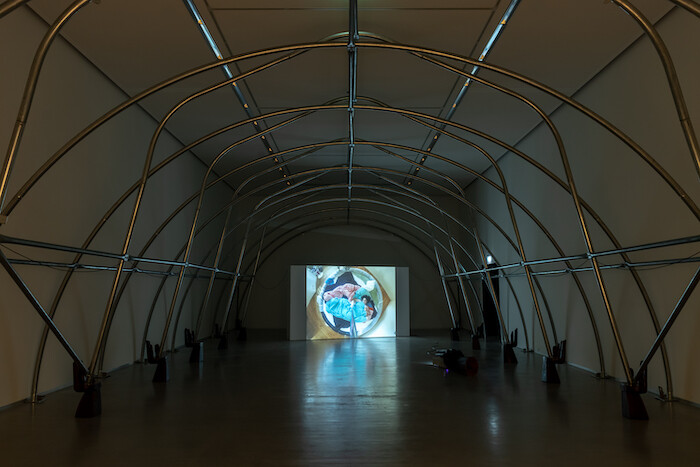Raphaela Vogel turns her chaotic, insistent, and reflexive gaze on religion in her video installation “Son of a Witch,” presented at the Berlinische Galerie as part of the 10th anniversary celebration of the Videoart at Midnight Festival. After walking through a portal delicately molded from white plastic and featuring dragons and a phoenix, viewers enter a dark gallery spanned by two huge metal frames used in agricultural tunnels. These nested structures resemble a complex ribcage, yet the space has the feel of a church. Viewers are drawn to Sequenz (2018), a video projected on a large screen at the far end, where the church’s apse would be. Spinning, round motifs fill the screen: for much of the video, the artist films herself lying in a circular bed, staring into the camera. Both watching and watched, she lures the camera closer before presenting her sweatpants-clad bottom and slapping it with her hands. On the soundtrack, a classical motif is picked out slowly on a keyboard. There is a choral piece by Benjamin Britten, a brief blast of Low Deep T singing “Please don’t / stay with me / go home”—then the screen goes blank.
The architecture and symbols of most places of worship have been honed over centuries. Vogel activates many such triggers, albeit tangentially, all at once, and around herself: it is clear that she is top dog. The feet of the smaller, interior metal frame are elevated on wooden chairs shaped like the open-handed Buddhist mudra; another such chair cups the projector. On screen, Vogel writhes amid billowing sheets like a whirling Sufi; mirrored along a central axis, the image also brings to mind a mandala. At other times, we’re in Christian territory. The artist lies in bed, holding a long selfie stick above her: the gesture marks a line in the image like the base of a crucifix, but this is subverted by the witchcraft in the title. References are stretched so far that I’m inclined to decode every detail, despite the ad hoc nature of the video. Does the meander border on her sheets hark back to ancient Greece and remind us how Golden Dawn is appropriating classical authority? Does a bottle of water signify the cult of fitness and the imperative to keep hydrated? Maybe she is just lying in bed, contemplating the perspective of a young contemporary artist in her own work, and daring herself to be god-like.
That perspective is fluid. Vogel is usually the actor in her video works and here fills multiple roles. She may be a victim, skewered by her instrument of self-observation; at other times she flails turbulently, as if unconscious of the camera. Later she is a seductress in a mudbrick interior, reeling in the camera with a fishing rod. She wears a blue veil, like the Virgin Mary—then she presents the viewer with her posterior. In another shot, she is a figure observed from above and behind by a drone, its shadow falling on her back. Even when Vogel is the video’s subject, she never relinquishes authorship: hers is the seeking, omniscient eye that guides the craft over the sea, or observes an elaborate building in a traffic roundabout. She sizes us up again from her boudoir before the loop abruptly stops. If she is her church’s figurehead, this religion has several gods.
Vogel’s recent exhibitons have been rangy and rhizomatic: ideas seep from one work into the next, sculptures stretch out or parade from space to space. “Son of a Witch” is a contrastingly pared-back, tightly focused presentation. In the gloom beneath the space’s metal ribs, I’m reminded of a Biblical story of Jonah, who was swallowed by a great fish after disobeying God. After three days and nights spent praying for forgiveness in the belly of the beast, Jonah was deposited on dry land. How viewers should act and what they might gain in this exhibition is less clear. The artist-godhead’s freewheeling, spiraling attitude is mighty enjoyable: she can be anything she wants to be. She utilizes the tools of social media to preempt the implied insult of the installation’s title, raising bitch to witch. It’s an emancipatory creed, yet a cautionary tale could be written: if real life is contorted to construct endlessly shape-shifting, virtual self-portraits, that syncretic self-devotion can promise hollow comfort. Vogel’s video dramatizes a frustrating bind: try, as a power grab, to present herself in the image of an artist, she may find that power now lies elsewhere. Meanwhile, the artist has fun making a mockery of the false gods she grew up with.
